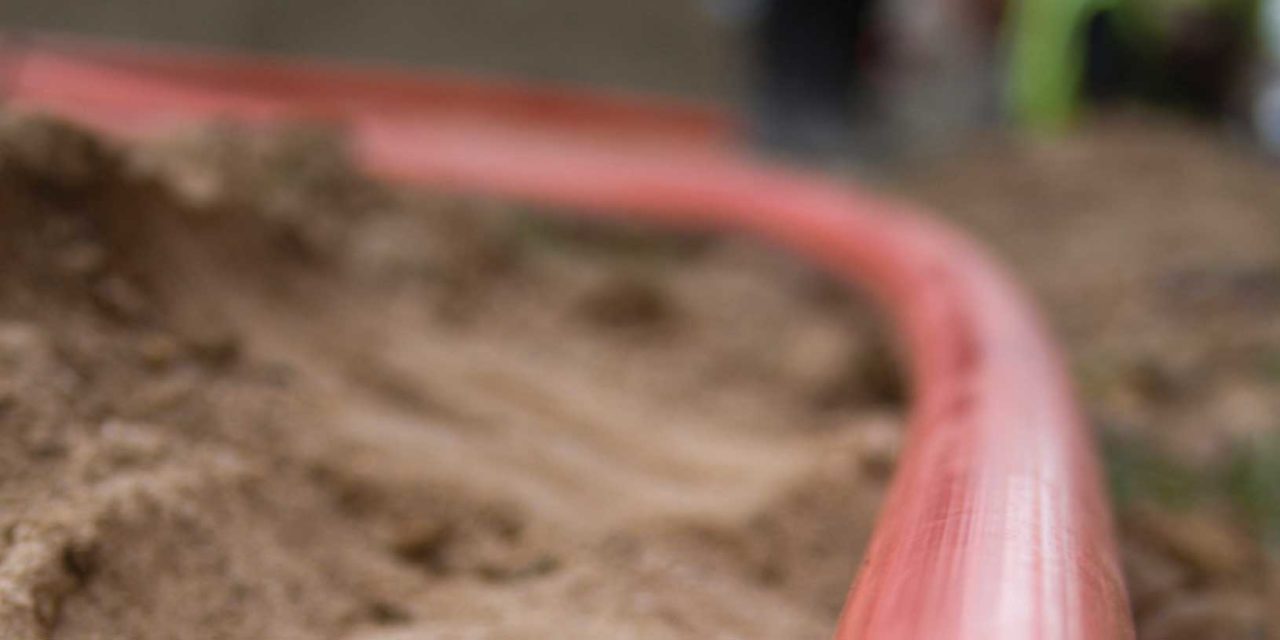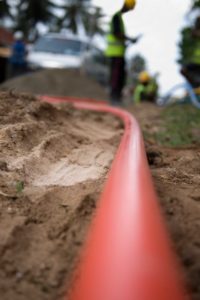As the old saying goes, “If you want something done, do it yourself.” It’s something that the City of Westminster took to heart. Residents and officials waited for years for a company to bring a high-speed fiber-optic network to the city. A fiber-optic system provides the speed and bandwidth that technology companies look for when considering places to expand.
“We realized that if we were ever going to get fast service available, we were going to have to do it ourselves,” said Westminster Councilman Robert Wack. It is the same decision that cities like Chattanooga, Tenn., and Charlottesville, Va., made.
The city bids the different phases of the project out to contractors who lay the fiber-optic lines. These lines can only go up to the edge of private property. If a resident or business signs an access agreement, then the fiber-optic network is brought up to the outside of the business or house on the property.
“It doesn’t cost anything to sign the agreement, but you’ll never get fiber optic to your home unless you fill out the agreement,” said Val Giovagnoni with Ting, the company which will serve as the Internet service provider for the first few years of the system’s operation. In fact, she said that it has been shown that property values improve if it has access to a fiber-optic network even if it’s not connected to it. She noted that home builders have already been in touch with the city to ensure that their new homes still to be built will be able to be connected to the network because they recognize the value that it adds to the property.
Once the fiber-optic connection is on a property, it is up to the property owners whether they want to access the internet via a fiber-optic network. If so, then they have to sign up for one of the plans that Ting offers. Ting is the exclusive provider of internet service on the network for the first years of the network. Then customers will be to shop around once other companies are interested in providing fiber optic service to Westminster residents.
For those property owners who are unsure of whether they want a fiber-optic drop on their property, they can make a decision later. The city has committed to providing fiber-optic drops to any Westminster property owner. However, if the decision to have a drop is made after construction of the network has moved onto other areas, it may take some time to get one.
The city began with a pilot area that included Carroll Lutheran Village and Carroll County Airport. This area included a good mix of residences and businesses to determine if there was enough interest in the project. It was a good location for potential economic development so that it could be seen if a fiber-optic network appealed to new businesses. When 20 percent of the property owners had fiber-optic drops, the program was deemed a success.
“We’re now moving ahead and put out to bid the next phase to connect 2,000 homes on the west side,” said Wack. The second phase will include Bolton Hill, Whispering Meadows, Furnace Hills, Fenby Farm, Cliveden Reach, Wakefield Valley, Village of Meadow Creek, Eagle View Estates, Avondale Run and adjacent neighborhoods and businesses.
Residents should start seeing activity on this new phase in the late spring. Once this phase is complete, the next phase will begin on the east side of MD 31.
“Downtown probably won’t see the network for two years or more,” said Giovagnoni.
The initial goal is for 9,000 homes and 500 business to be able to have fiber-optic connectivity. While fiber-optic access is attractive to residents, the city is hoping that being able to access a fiber-optic network will bring businesses to Westminster.
The benefit of being able to use a fiber-optic network is faster upload and download speeds.
“Anything that takes speed will happen faster: gaming, video calls, streaming movies, internet sites will load quicker,” said Giovagnoni. “Sometimes you won’t even see the buffer circle when you’re watching a movie.
Although Ting is the exclusive provider of service for now, residents probably won’t be disappointed. The company has a high customer satisfaction rating from Consumer Reports.
“When you have a problem, if you have a problem, you can call and actually talk to a human being,” said Giovagnoni.
The entire network is expected to be completed in 2019 or 2020. When completed, Westminster will have one of the first gigabit networks in the Mid-Atlantic region.
FAST FACTS:
- Projected cost for the entire project: $21 million
- Projected completion time for the entire project: 2019 or 2020
- Next phase of the project: About 2,000 homes on the west side of Maryland 31.
- Available fiber optic plans: Upload and download speeds up to 1000 Mbps for $89 a month; Upload and download speeds up to 5 Mbps for $19 a month
- Fiber optic cable is made of bundled glass threads that can transmit data via modulated light.
- Download the access agreement here: www.ting.com/internet/accessagreement
Connecting to the Internet Beyond Fiber Optic
It will still be a few years before Westminster’s fiber-optic network will be able to connect all of the buildings in the city to the Internet with lightning-fast speeds. However, residents should be able to get fiber-optic-like speeds by the end of the year, according to Quantum Internet & Telephone.
“We are extending our own fiber into certain areas throughout the county, typically in combination with the county’s network,” said Kevin Brown, CEO of Quantum.
Using dark fiber on Carroll County’s fiber optic network, Quantum will use new wireless technology that allows customers to connect to a fiber-optic network that is within 1,500 feet. More importantly, the fiber-optic speed is maintained over the wireless connection and the cost is significantly cheaper because Quantum is piggybacking on an existing fiber-optic network.
“You will have fiber-like speeds at a reduced cost,” Brown said.
He expects Quantum’s new system to be available in all populated areas of the county within two years, which is about the length of time that Westminster expects it will take to connect just Westminster to its own fiber-optic network.
Quantum isn’t the only option for faster Internet connectivity in Carroll County.
Freedom Broadband pushes bandwidth to rural areas using radio frequency. Although not as fast as fiber-optic, it is less expensive to build. A signal sent along a radio frequency will travel slower until it hits a router that puts it on a physical network. If that network is fiber optic, the signal speed will increase.
This is because the Internet is actually a collection of networks, not all of them are fiber-optic. However, when a signal runs along a fiber-optic network, such as the one Westminster is building, it will run considerably faster.
“Fiber optic is a good thing, but you have to look at what technology is best to use in each situation,” said Theresa Bethune with Freedom Broadband.
A fiber-optic network in a rural area would not have enough people using it to make it worth the construction costs. Nor would people need such speed. Fiber optic becomes cost effective when you have lots of devices on the network, such as might be needed for a company.
“Fiber optic sounds really great, but with the construction costs, it is usually not economically feasible,” said Bethune.
In part, this is why a company like Ting needs exclusive rights as a provider to help cover the start-up costs to introduce customers to the benefits of fiber-optic connectivity.
As for satellite users, the satellites make up their network so the existence of fiber-optic network does not come into play at all.


